What Is a Cardiac Alert Dog?
By Mawoo Pets · 9 min read
Last updated: January 11th, 2024
A Cardiac Alert Dog is a highly trained service canine that accompanies someone with a heart problem. These dogs have specialized trainers to show them how to know when their handler is in trouble, and what to do to help. Their main job is to detect ongoing heart trouble and let their handlers know what’s going on—but in many cases, they have other jobs, too.
What is a Cardiac Alert Dog?
Cardiac Alert Dogs have been trained specifically to detect changes in someone’s heart rate and. Dogs with an excellent sense of smell—and potentially great hearing, too—make the best candidates for Cardiac Alert Dogs. Once a trained cardiac service dog notices that something is wrong, either with your blood pressure or your heart rate, it lets you know, usually either by barking or pawing.
What Tasks does a Cardiac Alert Service Dog Perform?
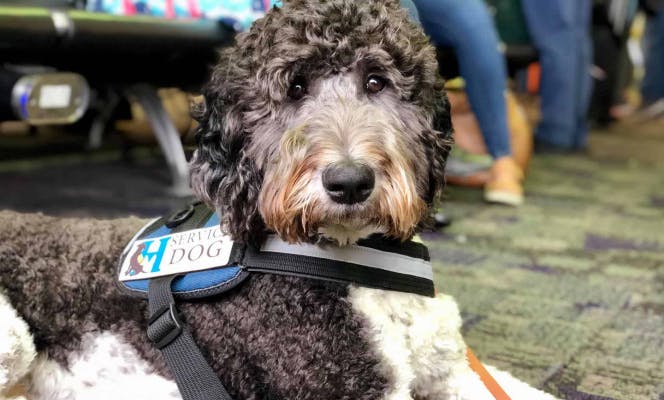
Cardiac Alert Dogs can learn many different tasks, depending on their trainers and the particulars of their handlers’ illness. In addition to alerting a handler about the change in blood pressure or heart rate, many of these dogs are able to bring medication, call 911 and provide comfort to their handlers during times of increased anxiety.
Service dogs are trained to perform different tasks depending on their handlers’ needs. For example, some bark to notify their handler to lie down to avoid falling and getting hurt. Others may bring blood pressure medicine or a cold drink from the refrigerator. Some dogs know how to use specialized communication devices like a touchscreen or a wall-mounted button that calls or texts emergency services and family members.
Some dogs even know to bring their handler a phone when help is needed. In addition, depending on their training, Cardiac Alert Dogs can potentially perform a wide range of other services. Like other service dogs, they can be trained to act as a seeing-eye dog, a guide for the hearing impaired, and a physical helper for those with motor disabilities.
These are a few actions your cardiac service dog could be trained to do on top of its cardiac alert duties:
Help you transfer in and out of your wheelchair, the bathtub, etc.
Provide physical support as you walk or when you lose your balance to prevent falling
Help you to a seat when you need to sit down quickly
Lead a helper to your location
How Does a Cardiac Alert Dog Know When its Owner is in Trouble?
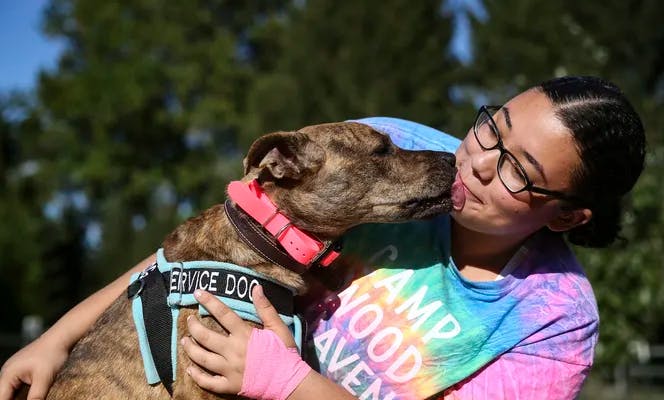 Photo: Philadelphia Inquirer
Photo: Philadelphia Inquirer
For dogs, the key to knowing when there’s a medical emergency is all about smell. There may be some hearing involved, too, but the experts aren’t quite sure about that just yet. Mainly, dogs trained to respond to negative cardiac symptoms do so by smelling the change in their handlers’ breath. The difference is due to chemical changes in the body during a heart attack or pre-cardiac episode.
When service dogs are trained for other kinds of tasks, like preventing falls or delivering medicine or calling an ambulance, they use other signals to spring into action. These might be vocal, or they might be hand signals. In other cases, a dog might notice its handler becoming dizzy or struggling to walk, in which case they will run over and provide a strong shoulder to lean on.
The way a service dog responds to an emergency depends completely on the needs of its handler and the training it has received. Elderly handlers have different requirements than deaf children or people with wheelchairs, for example. Those unique elements are introduced into the training regimen of a service dog during the second year of training.
How to Train a Cardiac Alert Dog
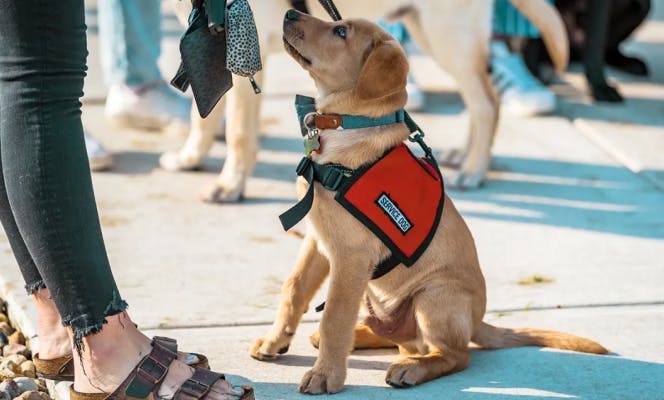
The most important step to training a Cardiac Alert Dog is choosing the right candidate for the job. Service dogs need to be friendly, intelligent and eager to learn. In some cases, they also need to be a certain size to perform tasks such as helping someone sit or walk. Sociable dogs are the best choice, as they like being around people and want to please their handlers.
Once a dog has been chosen for service training, it needs to learn the signs of changes in human blood pressure and heart rate. Trainers are usually hired by organizations who provide service dogs to people who need them. These people work with dogs 1-2 years old to help them identify a normal heart rate versus a racing or sluggish pulse, as well as the scent of a person in a healthy cardiac state.
Obedience, excellent senses and the desire to do a good job are essential in a Cardiac Alert Dog in training. Service dogs are usually placed into a two-year training program before going to live with their owners. During the first year of training, dogs learn basic and advanced obedience skills, including how to sit, stay and loose leash walking. Early on, dogs also learn a few simple ways to help people with disabilities cope more easily with common obstacles like wheelchair transfer.
During their second year of training, future service dogs—including Cardiac Alert Dogs—are paired with a human. That’s when lessons become more unique to the needs of each dog’s future owner. Training partners help dogs perfect their techniques in pulling wheelchairs, bringing supplies, using communication tools, and much more.
The Best Cardiac Alert Service Dog Breeds
As with other types of service dogs, like psychiatric service dogs and emotional support dogs, there are no rules about what breeds can and should be used. That said, there are some breeds that tend to have more of the necessary traits to become a great Cardiac Alert Dog.
If you plan to train your own service dog, keep the following Cardiac Alert Dog breeds in mind when choosing a puppy.
German Shepherds
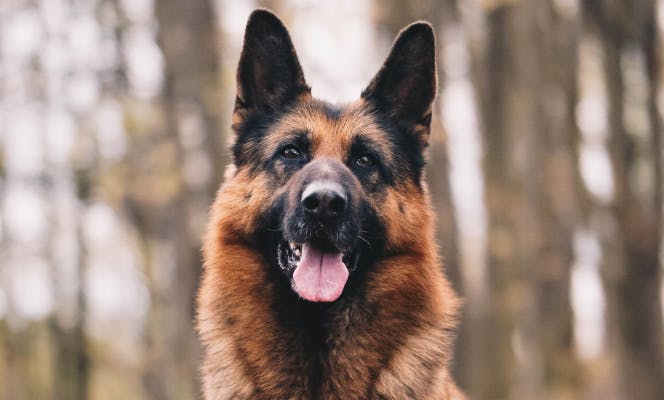
One of the most popular breeds in America, this hefty German Shepherd is well-known for its friendly disposition and intelligence. Easily identifiable by its size, pointed ears and black-and-roan coat, the German Shepherd is a favourite breed for all service trainers.
Obedience and a sharp mind make this breed one of the best working dogs, whether that’s in the field or in the home. German Shepherds are often trained for military and police forces, helping officers and military personnel to locate missing persons or illegal substances. These dogs weigh 50-88 pounds, depending on their gender. They live to be about 9-13 years old.
Golden Retrievers
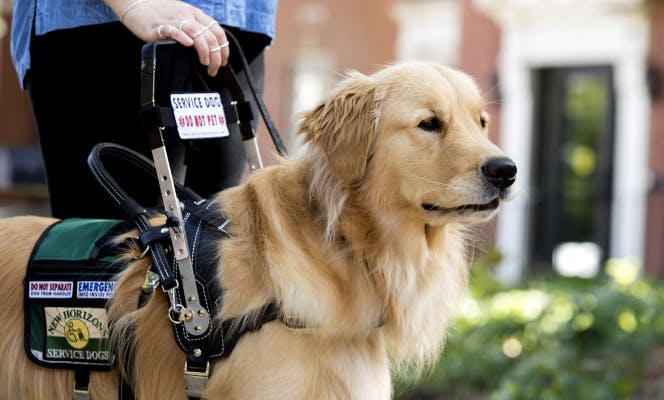
Arguably America’s favourite dog breed, the Golden Retriever gets its name from its ancestral role as a hunting companion. Bred to fetch game birds, this is a hardy and robust dog with a very friendly nature. Retrievers love being outdoors and playing games, but they are also gentle and loving. A fantastic family dog, Goldens are great with kids.
Clever and eager to please, this breed is a no-brainer when it comes to choosing a potential service dog. Strong as well as gentle, a Golden Retriever can perform physical tasks like pulling a wheelchair or providing stability when a handler starts to fall. These dogs can weigh from 55 to 75 lbs and live up to 12 years.
Labrador Retrievers
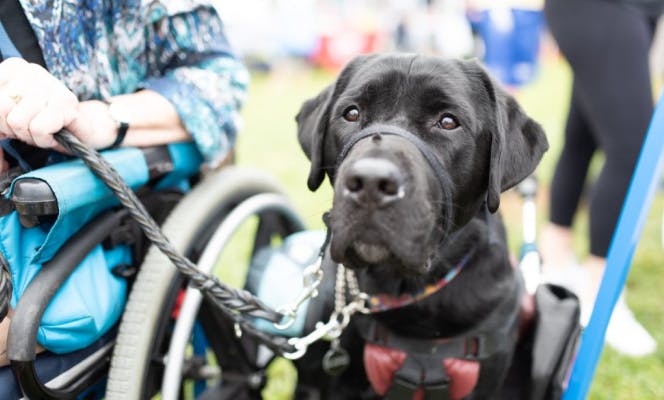
Originally bred as a fishing and hunting dog, the Labrador Retriever is now a beloved and popular family pet all over the world. Known for being friendly and playful as well as athletic, Labradors are great family or working dogs. The breed is smart and eager, making it the perfect choice for a service dog.
Not only kind to humans, Labrador Retrievers are gentle and respectful of other dogs and animals, too. With good training, these dogs make the ideal companion and Cardiac Alert Dog. They can grow to be 55 to 80 pounds and live to about 12 years old.
Poodles
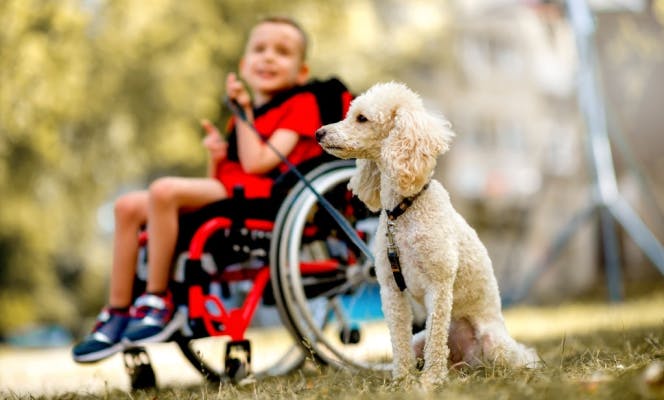
The Poodle comes from Germany originally, where it was popularized as a highly respected working dog. Today, Poodles come in three different sizes: Standard, Miniature, and Toy. These dogs love to play in the water and have fun outdoors with their favourite people.
Perhaps known more for their fancy haircuts and popularity at dog breed shows, Poodles are actually very smart and active dogs who love learning. This breed is a quick study and a favourite of many dog trainers. The Standard Poodle grows to be about 40 to 70 lbs and can live up to an incredible 18 years old.
Pomeranians

You might not immediately think of a small dog as capable of becoming a service dog—but Pomeranians are clever, very affectionate towards humans, and possess a strong sense of smell! In fact, this breed is growing in popularity as a medical alert dog thanks to its ability to sense important changes in the human body.
A well-trained Pomeranian can let you know whether you are about to have a cardiac event, or whether you have high blood sugar, or are suffering from symptoms of asthma. These dogs also have great hearing and make some of the best service companions for people who are deaf or hard of hearing.
Collies

Collies are known for their innate ability to become great animal herders. They’re also famous as having played Lassie on TV, and that reputation as a smart, caring breed is well deserved. Collies are not only intelligent enough to learn how to be great service dogs, but they are strong enough to help their handlers with some physically demanding jobs, too.
The Collie’s keen sense of smell makes it an ideal candidate for becoming a Cardiac Alert Dog. Friendly and sociable with people and other animals, these dogs are dedicated, loyal and easy to train.
Mixed Breeds & Rescue Dogs
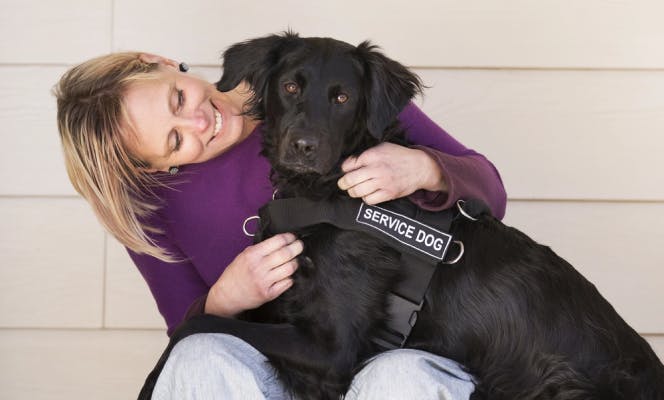
It’s true that mixed breeds and rescue dogs usually don’t have a documented genetic lineage, but that shouldn’t automatically count against them as service animals, and especially not as pets. Plenty of dogs with unknown backgrounds are just as smart and eager to please as their purebred counterparts!
If you choose a mixed breed or a dog from a rescue shelter to train as a Cardiac Alert Dog, just remember the traits that are important for such dogs: A keen sense of smell, a friendly personality and the patience and intelligence to be trained.
Ask a kennel assistant or breeder to meet with potential candidates to test their skills before you take your new dog home. Watch how a dog’s nose reacts when greeting you by sniffing your hand or clothes. A busy nose is a good sign!
Moving Forward with a Cardiac Alert Dog
Now that you know what to look for in a potential Cardiac Alert Dog, it’s time to find your new puppy and start training! If you still aren’t sure which type of dog is the best suited to you and your needs, take our quick Puppy Match Quiz to find out.
Just answer a few questions about your hobbies and lifestyle and we’ll recommend several dog breeds and available puppies that should complement your life perfectly. If you have questions, we are always happy to chat.
FAQs
What is a Cardiac Alert Dog?
A Cardiac Alert Dog is a specialized type of service dog that has been trained to detect and alert to signs of heart abnormalities in humans. These signs are most commonly changes in heart rate or blood pressure.
What training do Cardiac Alert Service Dogs receive?
These specialized service dogs undergo rigorous training to detect changes in heart rate, rhythm, and blood pressure, and then learn to perform a specific alerting action (e.g., barking) to notify their companion of the risk they have detected.
I have heart problems. Can I get a service dog?
Yes, individuals with heart conditions can get a cardiac alert service dog. These dogs provide not only security by monitoring heart-related health signs, but also companionship and a sense of safety to their human friends.
How do service dogs detect heart rate changes?
Service dogs learn to detect heart rate changes through a combination of scent detection and recognition of physical cues or symptoms exhibited by their handler (e.g., distress, sweating, paleness).
What is the cost of a Cardiac Alert Dog?
The price of a Cardiac Alert Dog can vary depending on the training program and the breed. Prices typically range from a few thousand to tens of thousands of dollars.
What are the benefits of having a Cardiac Alert Service Dog?
Benefits include early detection of cardiac events, assistance during medical emergencies, emotional support to the person in need, and an overall sense of security for the person with heart conditions -- knowing that they have a companion who is always looking out for them.
Related articles
Any questions? Get in touch!
We are here to support you every step of the way. Our concierge service is here daily to answer your questions!
Chat or speak with our team Mon-Sat 9a-9p ET.






